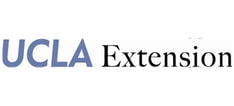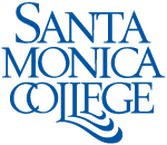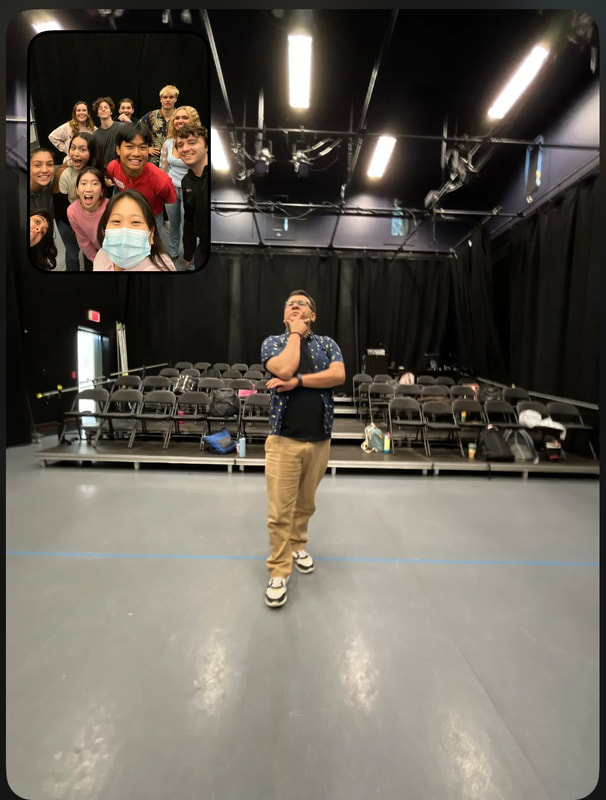|
On Acting
"Our demands are simple, normal, and therefore they are difficult to satisfy. All we ask is that an actor on the stage live in accordance with natural laws." -Stanislavski In teaching acting, it is my responsibility, and pleasure, to help actors develop their talent and commitment. I believe the craft of acting is a balance of technique, truth, and discipline. I strive to instill in my students that acting is doing, and specificity, while praising risk-taking and growth. Acting is a process, and the most essential element of the acting process is its individuality and flexibility. Therefore, I aim to be prescriptive in my approach. I teach Stanislavski supplemented by components of other systems. Some of my influences and in-class techniques include: Uta Hagen, Sanford Meisner, David Ball, Richard Brestoff, Earle Gister, Kristin Linklater, Michael Chekhov, and Viola Spolin. I don't believe there is one right way to achieve emotional honesty in one's work. As a result, I focus on three different emotional connection techniques in my teachings, which range from 100% imagination (Stanislavsky's magic if), to 100% affective memory (Uta Hagen's emotional recall), to somewhere in-between (Meisner's emotion preparation). |
On Improvisation
“Through spontaneity we are re-formed into ourselves.” -Viola Spolin Training in improvisation training in listening, being in the moment, and performing at the top of one's intelligence. The techniques and principles used in improvisation (yes and, listening, relationship, specificity, status, atmosphere, give and take, explore and heighten, activity, point-of-view, non-verbal communication, spatial awareness, etc., etc., etc.) are not only useful for performing impromptu comedy, but they are also enormously valuable in acting for the stage, acting for the camera, and in one's personal and professional life. I teach a combined method of Second City, Groundlings, and my own work of Laban in improvisation. The Second City style of scenic improvisation focuses on truth, relationship, and characters with a strong social-political point of view. The Groundlings style of improvisation focuses heavily on character and emotion. Lastly, adding my movement-based technique results in a more holistic improvisation technique. |
EDUCATION
Improvisation Conservatory, 2009 - 2010
The Second City, Chicago, Illinois
Master of Fine Arts in Acting, 2003 - 2006
Kent State University, Kent, Ohio
Thesis: “Character Acting: Acting Characters, The Son, Chino, and Alain”
Bachelor of Fine Arts in Acting cum laude, 1998 - 2003
Texas State University at San Marcos, San Marcos, Texas
The Second City, Chicago, Illinois
Master of Fine Arts in Acting, 2003 - 2006
Kent State University, Kent, Ohio
Thesis: “Character Acting: Acting Characters, The Son, Chino, and Alain”
Bachelor of Fine Arts in Acting cum laude, 1998 - 2003
Texas State University at San Marcos, San Marcos, Texas
ADDITIONAL PROFESSIONAL TRAINING
- The Clown School Los Angeles, online certificate programs: Teaching Clown and The Clown, Los Angeles, CA, 2020-23
- Teacher Development Program, National Alliance of Acting Teachers, Los Angeles, CA, May 20 - May 31, '19
- The Groundlings Professional Improvisation Program, Los Angeles, CA, Mar 26, ’13 to Dec 16, ‘13
- Act Now Studios, casting director workshops, Los Angeles, CA, Nov 27, ’12 to Aug 4, ‘14
- The Meisner Approach, Green Shirt Studio, Chicago, IL, Jan 17 ’09 to Jun 12, ‘10
- Improv for Actors, The Second City Chicago, IL, Jan 12 to Apr 27, ’09 and Oct 2 to Dec 19, ‘09
- Suzuki Method of Actor Training, Jeremy Sher, Links Hall, Chicago, IL, Feb 23, '09
- Commedia dell’Arte Masterclass, Maestro Antonio Fava from Italy, Piccolo Theatre School, Evanston, IL, Mar 21, ‘08
- Stage Combat Masterclass, fight director Michael Jerome Johnson, Kent, OH, Feb 2,‘06
- Bunraku and Shadow Puppetry, Stephen Kaplin, who worked on Broadway’s The Lion King, New York, NY, Jun ‘04
- Suzuki and Viewpoints, J. Ed Araiza, SITI Company, San Marcos, TX, ‘02
- Musical Theatre Performance, Marc Kundish, veteran Broadway actor, San Marcos, TX, ‘99
- The Juilliard School Junior Experience, acting, stage combat, clowning, voice and diction, New York, NY, ‘97
TEACHING EXPERIENCE

UCLA Extension, Los Angeles, California, Fall 2015 - present
Acting for the Camera II
Building on the skills learned in Acting for the Camera I, you prepare for work professionally by practicing in all styles that you may audition—features, sitcoms, TV drama, and commercials. Focusing on the flexibility of the actor in front of the camera, you develop camera techniques in scene study using scripts from TV series, sitcoms, and films. You also learn blocking and continuity with emphasis on master, two-shot, and close-ups. You perform individual and ensemble scenes increasing in complexity in terms of emotion and subtext, and the final project is a three-person scene.
Acting for the Camera I
Learn to get comfortable in front of the lens. Exercises begin with on-camera interviews so that students can view their screen images in playback. Instruction focuses on understanding technical and emotional adjustments required for working in front of the camera in a relaxed and truthful way and developing intimacy with the camera. Topics include the difference between frame sizes and learning to hit marks. Hone your acting techniques through scene-study guidelines and sensory and moment-to-moment exercises, as well as monologue work. Some exercises are performed on camera with emphasis on close-ups, simple scenes, and basic camera moves. The instructor critiques individual student's work during playback.
Acting Technique: The Fundamentals
In this introduction to acting, learn fundamental performance techniques and exercises, including relaxation, concentration, sense memory, emotional recall, improvisation, character tasks, and text analysis. Students then apply these techniques by rehearsing and performing monologues and two-character scenes. In-class partner work and weekly assignments are required.
The Actor's Tool Box: Creating Emotional Truth
In this workshop style course students gain acting tools and techniques to help them create true-to-life characters with emotional depth. Students learn how to draw emotional material from an array of tools that are both external and internal to the actor. These tools include sense memory, relaxation, imaging, voice and body work, and improvisation technique.
Acting for the Nonprofessional
Primarily for nonactors, this course also provides an excellent orientation for beginning actors. Using professional acting techniques in a supportive environment, students experience the unfolding of their full potential for self-expression and personal presentation. The training introduces new levels of relaxation, concentration, and focus, with the goal of helping students deepen sensory awareness, heighten imagination, release spontaneity, and improvise in their performances.
Acting for the Camera II
Building on the skills learned in Acting for the Camera I, you prepare for work professionally by practicing in all styles that you may audition—features, sitcoms, TV drama, and commercials. Focusing on the flexibility of the actor in front of the camera, you develop camera techniques in scene study using scripts from TV series, sitcoms, and films. You also learn blocking and continuity with emphasis on master, two-shot, and close-ups. You perform individual and ensemble scenes increasing in complexity in terms of emotion and subtext, and the final project is a three-person scene.
Acting for the Camera I
Learn to get comfortable in front of the lens. Exercises begin with on-camera interviews so that students can view their screen images in playback. Instruction focuses on understanding technical and emotional adjustments required for working in front of the camera in a relaxed and truthful way and developing intimacy with the camera. Topics include the difference between frame sizes and learning to hit marks. Hone your acting techniques through scene-study guidelines and sensory and moment-to-moment exercises, as well as monologue work. Some exercises are performed on camera with emphasis on close-ups, simple scenes, and basic camera moves. The instructor critiques individual student's work during playback.
Acting Technique: The Fundamentals
In this introduction to acting, learn fundamental performance techniques and exercises, including relaxation, concentration, sense memory, emotional recall, improvisation, character tasks, and text analysis. Students then apply these techniques by rehearsing and performing monologues and two-character scenes. In-class partner work and weekly assignments are required.
The Actor's Tool Box: Creating Emotional Truth
In this workshop style course students gain acting tools and techniques to help them create true-to-life characters with emotional depth. Students learn how to draw emotional material from an array of tools that are both external and internal to the actor. These tools include sense memory, relaxation, imaging, voice and body work, and improvisation technique.
Acting for the Nonprofessional
Primarily for nonactors, this course also provides an excellent orientation for beginning actors. Using professional acting techniques in a supportive environment, students experience the unfolding of their full potential for self-expression and personal presentation. The training introduces new levels of relaxation, concentration, and focus, with the goal of helping students deepen sensory awareness, heighten imagination, release spontaneity, and improvise in their performances.

Pomona College, Claremont, California, Spring 2020 - present
Theatrical Clown
This course is structured to be a comprehensive foundation in the basic and fundamental principles of Clowning with a strong emphasis on improvisation, the actor's instrument, and imagination.
Introduction to Comedy Improvisation
This course is an introduction to the fundamentals of comedy improvisation. Through games, coaching, and basic short-form scene work, students will develop active listening skills, learn how to create characters, and work up to creating a fully improvised long-form scenes. This course fosters the power of spontaneity, trust, and cooperation in a fun and creative atmosphere and will culminate with a public performance.
Acting for Film and Television
This course develops technical and conceptual techniques for the interpretation and performance of comedy and drama for film, television, and emerging technologies. Students will audition, rehearse and perform on camera a variety of scenes from Film and Television. Students will analyze and critique their on-camera work, as well as the work of classmates and established actors.
Intermediate Acting
This course continues the investigation of the tools and techniques explored in the Beginning Acting class. Students will delve into scene study, improvisation, and Stanislavski-based analysis techniques as well as deepen the connection between the truth of their emotional life and how it is expressed vocally and physically.
Basic Acting: Tools and Fundamentals
This introductory course explores the fundamentals of voice, movement, relaxation, text analysis and elements of characterization. Course material includes detailed analysis, preparation and performance of scenes and monologues.
Theatrical Clown
This course is structured to be a comprehensive foundation in the basic and fundamental principles of Clowning with a strong emphasis on improvisation, the actor's instrument, and imagination.
Introduction to Comedy Improvisation
This course is an introduction to the fundamentals of comedy improvisation. Through games, coaching, and basic short-form scene work, students will develop active listening skills, learn how to create characters, and work up to creating a fully improvised long-form scenes. This course fosters the power of spontaneity, trust, and cooperation in a fun and creative atmosphere and will culminate with a public performance.
Acting for Film and Television
This course develops technical and conceptual techniques for the interpretation and performance of comedy and drama for film, television, and emerging technologies. Students will audition, rehearse and perform on camera a variety of scenes from Film and Television. Students will analyze and critique their on-camera work, as well as the work of classmates and established actors.
Intermediate Acting
This course continues the investigation of the tools and techniques explored in the Beginning Acting class. Students will delve into scene study, improvisation, and Stanislavski-based analysis techniques as well as deepen the connection between the truth of their emotional life and how it is expressed vocally and physically.
Basic Acting: Tools and Fundamentals
This introductory course explores the fundamentals of voice, movement, relaxation, text analysis and elements of characterization. Course material includes detailed analysis, preparation and performance of scenes and monologues.

Santa Monica College, Santa Monica, California, Spring 2020 - Fall 2022
Comedy Acting Workshop
This course explores comedic acting skills through the application and development of progressive comedy techniques. Through acquired knowledge of the genre and analysis of plays, this course fosters the development of acting techniques for theatrical venues. Students will rehearse and prepare material and learn about the processes of comedy acting for the live theatre.
Comedy Acting Workshop
This course explores comedic acting skills through the application and development of progressive comedy techniques. Through acquired knowledge of the genre and analysis of plays, this course fosters the development of acting techniques for theatrical venues. Students will rehearse and prepare material and learn about the processes of comedy acting for the live theatre.

The Second City, Hollywood, California, Spring 2013 – Fall 2022
Diversity in Improvisation
A workshop in helping find the comedic voice of the diverse, multicultural actor.
The Taste of Second City
An introduction to the improvisation program and style at The Second City Los Angeles.
Adult Improv Workshop
An introduction to the improvisation program and style at The Second City Los Angeles for adults only.
Diversity in Improvisation
A workshop in helping find the comedic voice of the diverse, multicultural actor.
The Taste of Second City
An introduction to the improvisation program and style at The Second City Los Angeles.
Adult Improv Workshop
An introduction to the improvisation program and style at The Second City Los Angeles for adults only.

Kent State University, Kent, Ohio, Fall 2003 – Summer 2006
The Art of Acting
Structured to be a general introduction to acting with an emphasis on the actor’s instrument, intellect, and imagination. We will explore the foundations of the acting process and how to effectively make performance choices. This course is structured around exercises and activities designed to help the actor foster creativity, develop observation skills, deal with physical and vocal awareness, and create character studies. We will also discuss performances, including Kent theatre productions, film work, and our own class work.
The Art of the Theatre
The main objectives of AOT are to provide students with: basic knowledge about the theatre; tools to develop their critical thinking through the study of dramatic literature and performance; and opportunities to appreciate live performances. These objectives should be carried out through both academic (reading and writing) and hands-on projects. The main areas include:
(1)A survey of theatre history in relation to other forms of fine arts.
(2)Reading of key dramatic literature works.
(3)Understanding of the process of theatre production (i.e. performance spaces, aesthetic choices, and roles of contributing artists).
(4)Examination of the interconnection between culture and theatre
performance
The Art of Acting
Structured to be a general introduction to acting with an emphasis on the actor’s instrument, intellect, and imagination. We will explore the foundations of the acting process and how to effectively make performance choices. This course is structured around exercises and activities designed to help the actor foster creativity, develop observation skills, deal with physical and vocal awareness, and create character studies. We will also discuss performances, including Kent theatre productions, film work, and our own class work.
The Art of the Theatre
The main objectives of AOT are to provide students with: basic knowledge about the theatre; tools to develop their critical thinking through the study of dramatic literature and performance; and opportunities to appreciate live performances. These objectives should be carried out through both academic (reading and writing) and hands-on projects. The main areas include:
(1)A survey of theatre history in relation to other forms of fine arts.
(2)Reading of key dramatic literature works.
(3)Understanding of the process of theatre production (i.e. performance spaces, aesthetic choices, and roles of contributing artists).
(4)Examination of the interconnection between culture and theatre
performance
OTHER TEACHING - CONFERENCES, WORKSHOPS, MASTERCLASSES, PANELS, AND INVITED LECTURES
- Presenter, National Alliance of Acting Teachers, Improvisation in Acting Training? Yes, And! Workshop (June 2022)
- Guest Speaker, West Texas A&M University, Acting for the Camera and the professional industry in Los Angeles - Webinar – (May 2022)
Featured Panelist, Chicano Latino Student Affairs for The Claremont Colleges, Rompiendo Fronteras [Breaking Boundaries] navigating Hollywood and Higher Education as a Queer Latinx intersectional person - Webinar – (November 2020) - Guest Speaker, University of California – Davis, Theatre for Social Change, Interactive Workshop on Improvisation and Early Works of Luis Valdez and El Teatro Campesino - Webinar – (September 2020)
- Guest Lecturer, Pomona College, Race and Contemporary Performance Presentation (September 2019)
- Guest Lecturer, Pomona College, Beginning Acting for Social Change Improvisation Workshop (September 2019)
- Guest Instructor, University of California - Irvine, The Coup de Comedy Festival, Diversity in Improvisation Workshop (May 2015)
- Panelist, Kennedy Center American College Festival Region VIII, The Los Angeles Theatre Center, Working and Living in LA (February 2014)
- Presenter, The Complex Theatres Los Angeles | Green Shirt Studio Chicago, Laban Your Improv: Creating Characters and Scenes thru Movement (improvisation technique created by Ernie González Jr.) (August 2013 | November 2011)
- Presenter, Lemont Public Library, Improv with the Improv Masters Workshop (April 2012)
- Advanced Directing Guest Lecturer, Kent State University, storytelling through composition, movement, rhythm, behavior, and activity (February 2006)
- Presenter and Assessor, Portage County Assessment Opportunity, The Sound and Movement Wheel Workshop (April 2005)
- Presenter, Kent State University, Orienting New Teaching Assistants Program (August 2004)
- Panelist, Kent State University, University Teaching Council Conference (October 2003)
- Presenter, Kent State University, Introduction to College Teaching (August 2003)

